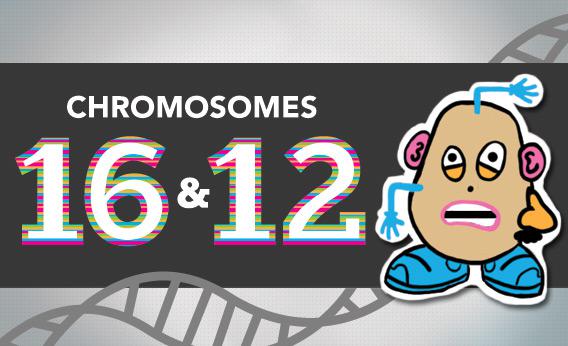No one kept it a secret exactly during her lifetime, but few people knew that Elizabeth Taylor was a mutant. In fact her condition, distichiasis, which usually involves a frameshift mutation near the tip of chromosome 16, helped accent Taylor’s famously lovely eyes with an extra-sexy set of double eyelashes to bat at the cameras. Taylor lucked out, though: In other victims, distichiasis scars the corneas, swells the limbs grotesquely, opens up cleft palates, and causes varicose veins. In 7 percent of patients, it also leads to heart disease, and perhaps not coincidentally, Taylor had a history of heart trouble and died of heart failure in March 2011.
The distichiasis gene isn’t the only DNA with an extraordinarily wide range of effects inside the body. The self-explanatory hand-foot-genital syndrome (a chromosome 7 defect) can cause stubby thumbs, small feet, soft wrist and ankle bones, urinary tract infections, and a urethra opening not at the tip but on the underside of the penis. There’s also Waardenburg-Shah syndrome, which causes the unlikely combination of deafness, piebaldism (patches of albino skin), and so-called megacolon, including constipation so bad it’s often fatal.
Single genes that tweak many different body traits are called pleiotropic, and pleiotropic genes can wield their power in different ways. Some build proteins in tissues or cells that just happen to appear all over the body, like connective tissues. Others, like the distichiasis gene, foxc2, exert control not so much by building things but by controlling what other genes build and when they build them. Scientists call genes with this power transcription factors.
Remember that transcription involves turning DNA into RNA. Human beings have something like 23,000 DNA genes, but not all of them are firing at once. Genes turn on and off in individual cells at different times, and the varying on/off patterns make skin cells and liver cells and brain cells unique. Transcription factors are what turn genes on in many cases, by clamping onto DNA and signaling cells to start manufacturing something. And foxc2’s protein just happens to turn on many other genes in many different tissues—it’s a genetic manager. When genetic managers screw up, though, multiple body parts suffer.
Perhaps the most important transcription factors are hox genes, which steer bodily development from our earliest hours. Insects, fish, mammals, reptiles, and all other animals share these genes, and the ubiquity of hox in the animal kingdom explains why most animals have the same basic body plan: a cylindrical trunk with a mouth at one end, an anus at the other, and various appendages sprouting in between.
Humans have four stretches of around 10 hox genes each, including a stretch on chromosome 12. And quite unusually for genes, the hox have a pretty strict division of labor. The first few hox within a given stretch generally design things near the top of the head. The next hox design things a bit lower down. The next hox work a little lower down, and so on, down to our nether regions. Why nature requires this tidy top-to-bottom mapping with the hox isn’t known, but all animals exhibit this trait.
Scientists refer to DNA that appears in the same basic form in many, many species as highly “conserved” because creatures remain very conservative about changing it. (Some hox and hox-like genes are so conserved that scientists can rip them out of chickens, mice, and flies and swap them between species, and the genes more or less function the same.) As you might suspect, highly conserved DNA like hox is vitally important, and it’s easy to see why creatures don’t mess with hox and other body-patterning genes very often. Delete some of this DNA and animals can develop multiple jaws. Mutate other DNA and wings disappear, or extra sets of eyes appear in awful places—bulging out on the legs or staring from the ends of antennae. Still other mutations cause genitals or legs to sprout on the head, or cause jaws or antennae to grow in the crotch area. And these are the lucky mutants—most creatures that gamble with these genes don’t live to speak of it.
Still, creatures can get around the strictures of highly conserved DNA in other ways. As mentioned in the palindrome entry, cells sometimes randomly double stretches of DNA. Doubling the hox stretch would give animals backup copies, and the backup copies could then mutate without such dire consequences. In fact, changes to highly conserved DNA might explain some of the large-scale, macroevolutionary changes scientists see in the fossil record—the relatively sudden emergence of creatures with antennae or extra legs or other ingenious variations on the basic body plan. Again, few creatures win such gambles, but those that do thrive. And as we’ll see tomorrow, fussing with one bit of conserved DNA may well have spared us humans a lot of heartache (and brainache) in our past.
